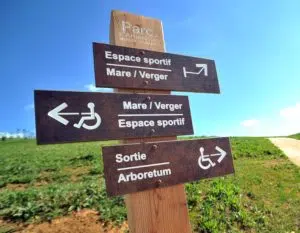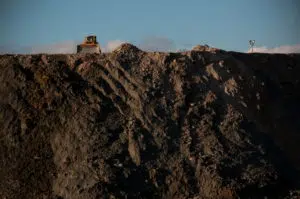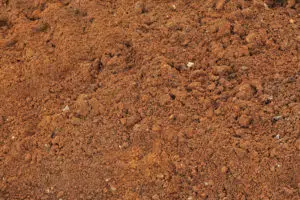Developing, renaturalizing derelict sites
Our projects are at the heart of a circular economy approach to the reuse of excavated soil from construction sites.
Through the reuse of this inert soil, ECT proposes and carries out non-built, sustainable development projects with an environmental and social vocation.
Each project enables the development of one or more new uses for the site to be revitalized : nature areas, reforestation, recreation zones, agricultural rehabilitation, even solar farms. These new developments enhance the region’s appeal.
A new, concerted and useful use for the region
Developing local development projects

ECT works with local communities to develop useful and concerted development projects, at no cost to the community. There are 3 key stages in this process.
ECT’s Development and Design department works with all stakeholders to define the local challenges of the sites to be (re)developed:
- Enhance a site with little or no potential: wasteland, neglected areas, degraded farmland, etc.
- Safety : this is the case for hazardous quarries, noise pollution, regularly occupied sites, etc.
- Protect and safeguard a threatened environment, landscape or asset (green belts, undeveloped land)
1
A site to develop
Derelict site, site of former activity
Site to be improved, site near a road or railroad line
Sensitive site, site to be protected
Denatured site, occupied site
2
Site enhancement, land reclamation
Improving the living environment
Site renaturation
Safety
Land rehabilitation
New infrastructure or equipment
3
A concerted, sustainable project
A project self-financed by the contribution of inert soil
Eco-design of inert soil reuse that respects the environment and biodiversity
Local consultation

100% self-financed projects
No cost to the community :
The contribution of land from the construction and public works sector will enable us to self-finance the development work.
Taking action and developing sites that have been denatured, abandoned or dangerous is now possible. These projects are no longer a source of cost for the community, but become a development opportunity.
Defining a new use for the site
The aim is to (re)give a non-built use value to the site and to agree on the purpose of the development through the reuse of inert soil excavated from building sites. In this way, the sites to be developed become areas for the direct reuse of land in accordance with the principles of the circular economy.
The implementation of ECT’s various development solutions will therefore make it possible to meet the needs of cities and their residents.
In most cases, these development projects have several objectives. This is how they respond
- to the diverse aspirations of local residents
- communities’ need for green spaces and undeveloped infrastructure.
- The objectives of the ZAN areto combat the artificialization of land and to reduce land consumption. The aim is to protect natural agricultural and forest areas (NAF).
For example :
- renaturate wasteland, reforest,
- create parks open to the public,
- densify leisure and outdoor sports areas,
- create biodiversity protection zones,
- returning land to agriculture,
- protect against noise with landscape buffers,
- secure careers,
- create urban farms,
- model golf courses,
- installing photovoltaic power plants.
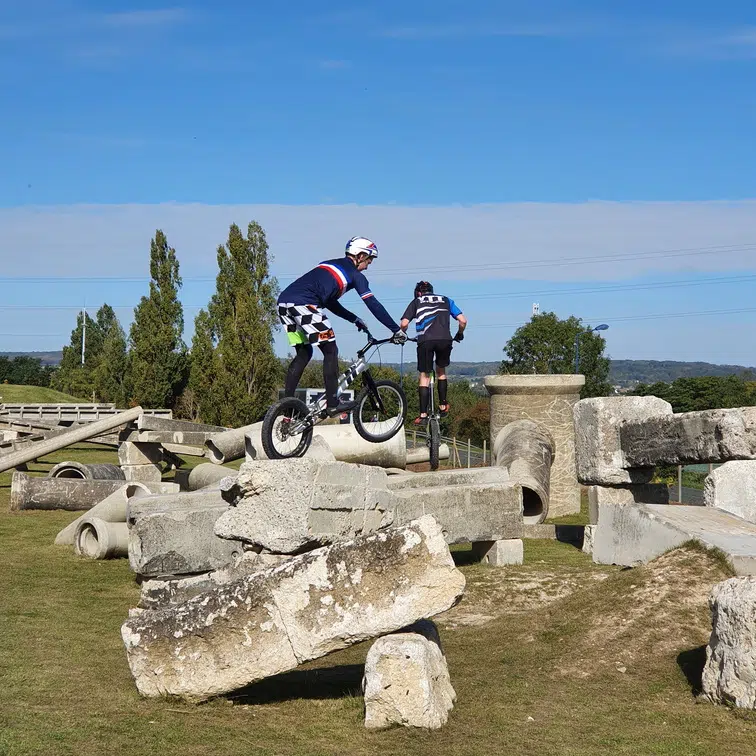
ECT projects contribute to ZAN objectives
Project life cycle
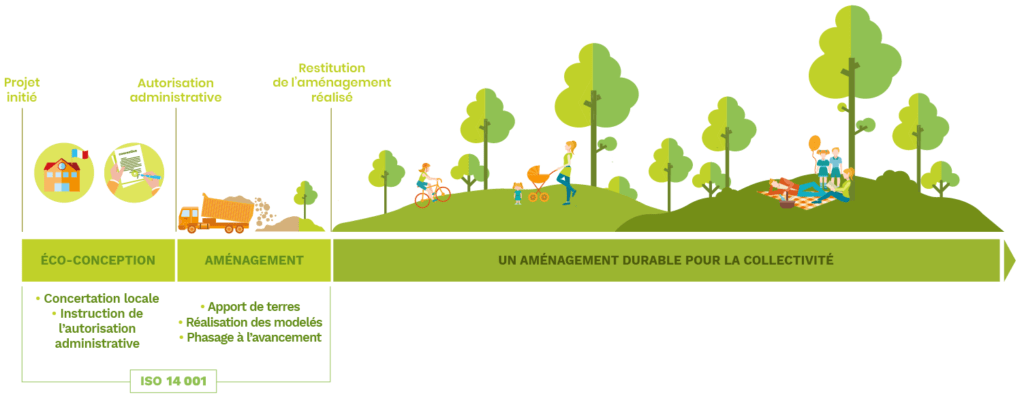
Lifecycle phases
Project approvals, regulations and assessment
- Site design, consultation, instruction and administrative authorization
- Opening the site to soil inputs: controls, traceability and use of soil, earthworks and modelling.
- Finalization of equipment and landscaping.
- Return of the landscaping, generally to the community, open to the public or handed over to the farmer.
- All projects are carried out under the terms of prefectoral decrees or development permits appraised by government departments.
- ECT directly carries out construction work within the scope of its authorizations.
- Soil reception is managed in strict compliance with material traceability obligations.
- Throughout the life of the project, it is evaluated on the basis of environmental and societal indicators.
Site design
The site’s design brings together a wide range of skills. It requires the in-house expertise of the Development department, combined with that of our partners, ecologists, landscape architects or specialists in the planned developments.
- landscape design of the site, following excavated soil inputs and depending on the development objective,
- the site’s ecological and biodiversity potential, with the implementation of ERC strategies and the recreation of natural environments,
- hydrogeological management of the site,
- integrating the future worksite with local constraints and defining the worksite phasing to ensure complete operational safety,
- education and communication around the project.

Sustainable projects with a positive impact
By applying the principles of a circular economy for excavated soil, the site where the soil is received becomes a non-built development site serving the attractiveness of the area. The transformation of derelict land enables us to take action to preserve local ecosystems and create useful facilities for local residents and users.
The landscaping carried out combats the causes of biodiversity erosion. And implement nature-based adaptation solutions.
Creation of diverse ecological environments
Restoring soil functionality and permeability
Controlling invasive plants (EVEE)
Improved management of torrential rains
Manufacture of fertile substrate (Urbafertil)
Photovoltaic energy development
Restoring agricultural land
Reconnecting city dwellers with nature
Creating shared sports and leisure areas open to all
City greening
Your most frequently asked questions
The management and reclamation of excavated soil and the non-built development of sites fall within a legal and regulatory framework.
ECT sites are opened within the framework of an administrative authorization: ICPE/ISDI authorization or development permit.
Each project is associated with a regulatory file, studied, drawn up and examined in compliance with the regulations.
Depending on the configuration of the land reuse site, its location, its size, the geology of the subsoil, the future use of the site and the type of authorization under consideration, the applicable regulations may be derived from :
- urban planning code
- and/or environmental code
- and/or “water law” procedures (IOTA)
Depending on the project, this may require the involvement of specialized engineering firms to address landscape, hydrogeological, ecological, geotechnical and acoustic issues. Additional impact studies may be carried out, depending on regulations. ECT works upstream with the local authorities and associations concerned. The municipalities involved are kept informed of projects and are involved in the consultation process, even when they are not signatories to the administrative authorization. Some of our projects are also subject to public inquiry.
Last but not least, our projects are also communicated to and examined by prefectural government departments such as the DREAL and DDT.
Limiting environmental impact
As part of the ISO 14001 certification, renewed in 2020, ECT, as part of a continuous improvement process, implements measures to limit the environmental impact of its activities.
All ECT sites in operation are ISO 14001 certified.
Optimized site meshing.
The sites operated by ECT are of two types to optimize the transport of inert soil.
- A network of small-scale sites capable of receiving a few hundred thousand m3 of materials from local deposits. This network, which is gradually being rolled out throughout the Ile-de-France region, helps to reduce the time spent travelling by lorry, thereby contributing to a better carbon balance by reducing the production of greenhouse gases.
- large-scale sites, such as Villeneuve-sous-Dammartin (77), capable of handling several million m3 of materials, enabling us to respond to the large truck flows required for major earthmoving projects in the Ile-de-France region
We systematically canvass the companies in charge of the work, working with them to develop solutions that limit environmental impacts. choice of host sites and access routes to depot areas, with priority given to trunk roads in order to keep nuisance to a minimum. residents.
Controlling dust and sludge production
In compliance with regulations on keeping the public highway clean and on dust dispersion, ECT undertakes, on all its development sites to keep the site and public access roads clean for the duration of the development work. Depending on the size of the worksite, a “roudiluve”, a tank for washing the wheels of heavy goods vehicles, is installed at the site exit.
In dry periods, the runways and areas being backfilled are watered if necessary. The roads leading to the site are regularly cleaned by a sweeper.
Controlling noise pollution
In compliance with article R 48-5 of the French Public Health Code on the prevention of noise pollution, ECT takes all necessary steps to organize the operation of its development sites in order to limit annoying noise emissions, and ensures the regular maintenance of its equipment.
Water protection
Given the inert nature of the materials brought in, the development project poses no risk of pollution to surface and groundwater.
If necessary, a hydraulic study is carried out to direct and regulate runoff.
Find out more about environmental and social quality indicators for ECT projects
ECT’s environmental and social developments cost neither the community nor the landowner anything. Developing territories and their attractiveness at no cost to the community is possible by applying the principles of a circular economy to excavated soil from construction sites.
ECT ‘s business is to manage excavated soil from the construction industry and transform derelict and abandoned sites . The reuse of inert soil on these derelict sites finances their transformation.
- The construction and public works sector pays ECT for the management (environmental engineering, characterization, traceability, reception) of its surplus excavated soil.
- On the site to be transformed, the reuse and recovery ofexcavated soil finances 100% of the rehabilitation project and carried out in consultation with the community.
- For €1, ECT returns the finished layout to the local authority, which then benefits from a new layout, free of charge, for €0.
Inert materials are defined in article R541-8 of the French Environment Code.
These are materials that undergo no significant physical, chemical or biological modification. Inert materials do not decompose, burn or produce other physical or chemical reactions. They are not biodegradable and do not deteriorate other materials with which they come into contact in a way likely to cause environmental pollution or harm human health (Council Directive 1999/31/EC of April 26, 1999 – OJEC of July 16, 1999).
It is forbidden to dilute or mix waste for the sole purpose of meeting acceptance criteria (Order of October 28, 2010).
Inert excavated soil belongs to the category of inert materials.

